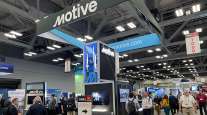Opinion: ‘Personalizing’ the Fleet Management Supply Chain
With power shifting from the retailer to the consumer, the personalized supply chain has been a buzzword in the retail industry for quite some time. But why are we talking about retail in an article about fleet management?
Because the same principles can — and should — be applied when you think about fleet. For retailers to remain competitive in today’s consumer-driven market, they are expected to meet and beat customer demands for customization and express shipping — all without increasing costs. This requires that retailers know their products and their supply chain inside and out — and understand what can be adapted quickly to meet consumers’ expectations.

Price
Just as a retailer must thoroughly understand their product, fleet managers must do the same with their assets. The condition of these assets is key to their success. When it comes to fleet management, the “personalized supply chain” means having vendors, processes and systems in place to ensure that necessary parts, materials and people are available when critical assets require maintenance. Fleet managers often struggle to identify where to properly invest time, but once they identify assets in terms of their level of importance, this challenge can be resolved — and time can be invested in the most critical assets.
While all equipment is important, organizations can begin to identify the most critical assets in their fleets. Often, the most important assets are seen as those that require the most maintenance and are at risk of breaking down in the near future — ultimately leading to costly downtime, repairs or even the need to purchase replacement equipment. This is a more reactive approach.
The more strategic and efficient method for identifying the most critical assets is determining which assets would have the largest impact on operations. These are assets that, if down, could lead to a potential delay in order fulfillment or delivery — causing a decrease in customer satisfaction and productivity. Adding to criticality is a determination as to which physical assets are most expensive to replace. Once managers identify the most critical assets in their operation, they should focus on using reliability centered maintenance to maintain the upkeep of this equipment to ensure a smooth-running operation. Preventive maintenance such as this will help to boost productivity, customer satisfaction and help companies remain competitive.
Reliability centered maintenance is centered around the concept of operating physical assets at top efficiency — including the quick and precise addition of new assets into service. By ensuring that assets are operating at top efficiency, fleet managers are able to respond to customer needs more quickly — increasing satisfaction and experience. Implementing RCM requires identifying assets in terms of their criticality — and the risk associated with each piece of equipment.
Importance can be determined by creating a risk score based on criticality, priority and various factors that may change over time, such as an inspection that is now overdue, equipment operating conditions that have deteriorated, an environmental situation that has made the work less safe, a regulatory deadline that is fast approaching and many other possible change factors to consider at a given snapshot in time. All other aspects of an effective asset management plan will be driven by this information.
Next, managers should ensure that the supply chain is prepared to keep critical assets operating. This can be determined by asking the following questions:
• Are the necessary replacement parts and materials available?
• Are the quality, value, responsiveness and delivery time of vendors reliable?
• Are the correct vendors being used based on product availability and purchasing agreements?
• Are the technicians servicing these assets available when needed and do they hold the necessary training and certifications?
In fleet management, preventive maintenance on critical assets may include tires, brake pads, rotors, suspensions, special fluids or various other electrical components and parts. Certain parts may be manufactured for a specific reason or specific asset. This means that they must be replaced at the right time to optimize uptime.
An essential aspect of any fleet manager’s plan should be enterprise asset management software, which can scale as business and maintenance needs grow. EAM supports the personalized supply chain — pinpointing an asset’s condition, last date of service and any external conditions that could impact performance. This technology can track assets of any size, as well as related materials, suppliers, spares, part location and the location and details of outside repair/maintenance shops. An effective EAM solution should be able to analyze data received by fleet managers from telemetry systems to determine asset location and condition, and the best time to schedule maintenance.
To personalize the fleet management supply chain, those who manage it must know the parts, materials, supplier, tools, software and technicians that keep their assets executing at maximum capacity for as long as possible.
Price has more than 20 years of experience in the enterprise asset management (EAM) solution area at Infor. He is the technical product evangelist and strategist for the Infor EAM portfolio, which includes EAM, MP2 and Spear Technologies.




